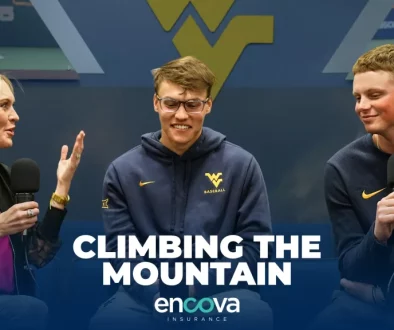Luck talks Country Roads Trust, NIL on podcast
Oliver Luck, co-founder of Country Roads Trust, recently made an appearance on Tom McMillen’s LEAD1 Angle podcast to speak about our team’s effort to help student-athletes through the use of Name, Image and Likeness.
The LEAD1 Association was formerly the Division 1A Athletic Directors Association, which was founded in 1986. Based in Washington, D.C., it’s the membership association that represents the 130 NCAA Division I Football Bowl Subdivision (“FBS”) athletic directors and their departments.
“THE LEAD1 ANGLE” EPISODE 19: OLIVER LUCK, FORMER ATHLETICS DIRECTOR (WVU) & NCAA EXECUTIVE
Written Recap
On Tuesday, LEAD1 Association (LEAD1) released its 18th episode of the “LEAD1 Angle with Tom McMillen,” where LEAD1 President and CEO, Tom McMillen, interviewed former West Virginia University (WVU) Director of Athletics, and NCAA Executive, Oliver Luck, about some of the latest name, image, and likeness (NIL) trends and other relevant college sports regulatory issues. The interview is particularly timely as Luck recently announced the creation of “Country Roads Trust,” an independent company set up to obtain contributions to create NIL opportunities for WVU college athletes. Here are some of the important takeaways from the episode:
- “Outside” NIL collectives are dominating the NIL headlines, but questions remain as to whether NIL facilitation should fall under direct institutional control. Because of various state laws and institutional policies prohibiting athletics departments from arranging or facilitating NIL agreements, NIL collectives have surfaced, whereby resources from businesses, boosters, fans, and donors are pooled together to create NIL opportunities for college athletes. Although these collectives are typically unaffiliated with the university, more and more collectives have emerged, so that institutions can compete with their counterparts in presenting NIL opportunities to their athletes. According to Luck, on collectives, the essential regulatory consideration is whether outside third parties, such as collectives, should control NIL opportunities for college athletes or whether these collectives should fall under the jurisdiction of athletics departments, so that they can have more oversight of NIL. Under the latter scenario, however, legal questions remain as to whether any institutional affiliation with a collective would trigger Title IX scrutiny, given potential involvement of the institution.
- As the NCAA transforms itself, “pay for play” will be harder to define and enforce in the future. The NCAA’s Interim NIL Policy prohibits pay for play and improper recruiting inducements. According to Luck, while “pay for performance” (i.e., NIL compensation for scoring a certain number of points) and “recruiting inducements” (i.e., an institution cannot promise an athlete any benefit related to NIL) can be policed to some extent, “pay for play” is much harder to regulate given that the term is ill-defined, and all athletes can now monetize their NIL. “It’s going to be hard for the NCAA to get the horse back into the barn in any meaningful way,” said Luck. While the new NCAA Constitution states that institutions may not compensate athletes for “participating in a sport,” according to McMillen, as the Constitution is currently written, a third party or even a conference could decide to be more “open” to pay for play. According to McMillen, the more disconnected that intercollegiate athletics is from higher education, the more interest that it may create for the Congress to get involved in regulating college sports.
- NIL and the transfer portal are “perfectly synced.” Because athletes in all sports can transfer immediately, there are now three “moments” of athlete retention that institutions must focus on including (1) the recruitment of athletes from high school; (2) keeping athletes on campus; and (3) monitoring the transfer portal. The new transfer environment has essentially created “free agency” in college sports with very limited restrictions. According to Luck, this environment “perfectly syncs” with the new NIL universe as college athletes can base their transfer decisions, at least to some degree, on NIL opportunities. While it is unlikely that the enterprise will be able to place any significant restrictions on this new transfer environment, there has been some discussion around placing restrictions on transferring during certain time periods.
- Given the devolution of the NCAA, Luck is “not optimistic” that a national college sports enterprise can be effectively run at the conference level. According to Luck, the lack of consensus on College Football Playoff (CFP) expansion may be emblematic of the ability for various conferences to effectively work together. It is worth noting that Luck is open to the concept of a separate governing structure for Football Bowl Subdivision (FBS) football.
More in the recording can be found regarding McMillen and Luck’s discussion on the current college sports regulatory landscape.



